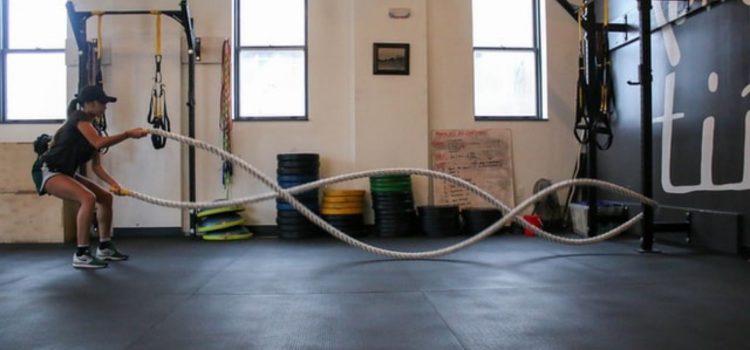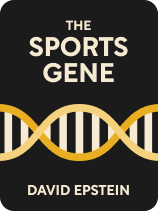

This article is an excerpt from the Shortform book guide to "The Sports Gene" by David Epstein. Shortform has the world's best summaries and analyses of books you should be reading.
Like this article? Sign up for a free trial here .
Is there such a thing as a “sports gene”? What are some examples of genes that contribute to athletic ability?
There’s no single gene that can account for an athlete’s success. According to David Epstein, the author of The Sports Gene, at our current level of understanding, investigating the effects of a single gene can tell us more about why someone is not an elite athlete than about why they are. While there’s no single sports gene, science has unraveled several genes that contribute to athletic ability.
Let’s look at a few examples.
Specific Genes and Their Impact on the Field
It will be a long time before science unravels the genetic basis of even seemingly basic traits. For example, Epstein explains that it took a study of nearly 4,000 people and nearly 300,000 gene variants to determine just 45% of the genetic basis for height! However, for some genes, scientists have developed a decent idea of their role and effect on our physiology. Here are some examples of the “sports genes” that have been discovered so far:
ACTN3 Gene
Our ratio of fast- to slow-twitch muscle fibers can determine our success in certain sports. Alpha-actinin-3 is a protein found in fast-twitch muscle fibers. The code for making this protein is found in the ACTN3 gene. The “R variant” of the gene results in normal production of the protein, but the “X” variant prevents the protein from being synthesized. While scientists do not know how this happens, there is a strong correlation between the R genotype and sprinting speed. Tests on athletes from around the world have revealed that the XX genotype is almost nowhere to be found in elite sprinters.
- Researchers following the ACTN3 gene found that almost all African people (and people with recent African heritage) have at least one “R” copy of the gene. In contrast, populations from other parts of the world have varying frequencies of X alleles (for example, 25% of people of East Asian ancestry had two X copies). One possible explanation is that having less muscle mass is more efficient for metabolism in cold climates. Another is that the shift from hunting and gathering to agriculture meant that people were less dependent on bursts of speed and worked less intensely for a longer period of time, which would favor slow-twitch muscle fibers.
The lack of a scientific explanation for why the XX variant is virtually absent in elite sprinters has not stopped for-profit genetic testing companies from selling genetic tests for ACTN3 gene variants to interested athletes and parents. As Epstein points out, since we do not know why some athletes are naturally fast, these tests can only really serve to add further evidence to the fact that most people with the XX genotype will not become elite sprinters; a fact that most people can ascertain without genetic testing.
CREB 1 Gene
Researchers have discovered that the CREB 1 gene (a gene that influences the pace of our heartbeat) can help determine how much a person’s resting heart rate may drop in response to fitness training. This can help explain why some athletes’ resting heart rates can drop into the 40 beats per minute range, while some very fit people’s resting heart rates will remain higher.
(Shortform note: An article from the American Heart Association explains that this gene has a strong impact on how our heart rate responds to exercise, but that there are also “at least five” other alleles that also contribute to this response.)
FTO Gene
Being heftier can be an advantage in sports like football and shot put while having a slighter frame can be an advantage in sports such as distance running. While athletes will intentionally put on or take off weight as part of their training strategy, our heft is, at least in part, determined by our genes. Epstein cites a study called the GIANT (Genetic Investigation of Anthropometric Traits) Consortium Study, which looked at the genetic makeup of 100,000 adults. They were able to identify six gene variants that affected individual heft. One of the genes identified was the FTO gene, which can cause a person to have a stronger or weaker preference for fatty foods.
(Shortform note: In 2007, the FTO gene became the first gene that research definitively linked to obesity. Several studies have shown a strong link between genes and obesity, with an estimated range of 40-90% of a person’s obesity being genetically determined.)
Other genetic factors, such as a person’s ratio of fast- to slow-twitch muscle fibers, can also make losing weight easier or more difficult. Fat is largely burned in the slow-twitch muscle fibers. Epstein notes that this may explain, in part, why people who put on muscle easily can have a hard time losing fat. It can also explain why athletes who excel in power sports often have a naturally “stockier” build than endurance athletes.
| The Myth of the “Fat Burning Zone” While some athletes put on weight for the sake of their sport, many exercisers are looking to lose fat. Both fat and carbohydrates can fuel exercise. When we perform cardiovascular exercise at a low intensity, a greater percentage of our body’s fuel comes from fat than from carbohydrates. The ratio of fats to carbohydrates burned at low intensity has led to a persistent idea in the fitness industry that exercisers looking to lose fat should stay in the low-intensity “fat-burning zone” (think a fast walk or light jog) during cardio. This idea is so ingrained in the fitness industry that many pieces of cardio equipment list low target heart rates as “fat-burning zones.” However, while low-intensity exercise may mean a greater percentage of fat is used for fuel, this does not mean that “light” cardio is better for weight loss. When the intensity of exercise is increased over the same period of time, our bodies burn more calories overall. Shifting the intensity to a higher level may decrease the ratio of fat to carbohydrates used, but the overall increase in calories burned will still result in more fat being utilized. Exercisers who adhere to the “fat-burning zones” listed on the treadmill or other pieces of equipment may be unintentionally burning fewer calories (and thus less fat) than they would if they were to increase their effort level. Source: National Academy of Sports Medicine. (2014). NASM Essentials of Personal Fitness Training (Fourth Edition Revised ed.). Jones & Bartlett Learning. |
Apolipoprotein E (APOE)
The Apolipoprotein E gene influences inflammation in our brains following head trauma. This gene is of particular interest for athletes such as football players for whom head trauma is a constant possibility during play. As Epstein notes, the Apolipoprotein E gene has three variants: APOE2, APOE3, and APOE4. A person’s variant of the gene can influence how they recover from a brain injury. People with the APOE4 variant can experience more complications during the healing process and seem to be more at risk for dementia and cognitive impairment years down the road. (The APOE4 variant is also associated with Alzheimer’s disease.)
Studies on boxers and football players have shown that having the APOE4 variant and being hit in the head during play can result in cognitive impairment. Data shows that of the athletes who suffered severe complications from head trauma, many more had two copies of APOE4 than occurs in the general population. Epstein cites one researcher who compares the risk of getting dementia for someone with one copy of APOE4 to the risk of brain damage from playing in the NFL. Having two copies (one from each parent) increases the risks.
In a possible direction for future policies in sports, Epstein notes that the elevated risk for athletes in contact sports with one or more copies of the APOE4 variant may warrant genetic testing. This would give players more information about their personal risk.
Genes and Pain
Our genes influence our experience of pain. As Epstein notes, pain is inevitable in most sports, and managing pain is an important part of being an elite athlete. Having a version of a gene that makes us better able to manage pain could give some athletes an advantage on the field and during training. Research from a professor of psychology showed that collegiate student-athletes were less sensitive to pain than their peers.
Epstein cites a few genes that have been implicated in our response to pain:
- The SCN9A gene influences people’s perception of pain. One mutation of this gene causes people to experience no pain at all. While this might seem like an advantage in sports at first, people with this mutation do not usually live very long. They are unable to process important feedback from their bodies (such as having an infection or responding to signals from our nerves to change positions or move away from a source of discomfort and so on), which causes them to die young. Another mutation in the same gene causes people to be hypersensitive to pain. More common versions of this gene cause most people to fall in the middle of these two extremes. That multiple versions of this gene exist in the population illustrates how people really do experience pain differently.
- A mutation in the MC1R gene, which gives many redheads their hair color, also seems to make redheads better able to tolerate some forms of pain than others.
- The COMPT gene has been called the “worrier/warrior gene.”
- There are two versions of this gene, called Val and Met. Sixteen percent of people in the US have two Met versions of the gene. Forty-eight percent of people have one of each and 36% of people have two Val versions.
- The “worriers”: People with the Met version tend to be more sensitive to pain and to be more anxious. Studies have also found that they are able to perform cognitive and memory tasks with less mental effort.
- The “warriors”: People with the Val version generally do worse on tests of mental flexibility but are more tolerant of pain.
- Epstein cites the chief of a neurogenetics lab at the National Institute of Health, who suggests many professional football players likely have the “warrior” versions since they experience pain and discomfort daily.
While some athletes may have a genetic advantage when processing pain, intense athletic competition can make anyone less sensitive to pain. Epstein notes that sports can activate our fight or flight response. Under stressful or dangerous conditions, our brains are able to block out pain signals so that we can run or fight. This explains how athletes can sometimes play through injuries or may not even notice injuries sustained during play until later.

———End of Preview———
Like what you just read? Read the rest of the world's best book summary and analysis of David Epstein's "The Sports Gene" at Shortform .
Here's what you'll find in our full The Sports Gene summary :
- A look at how our genes play a determining role in our success in sports
- Why practice doesn't always guarantee success
- The fortuitous gene pairings that can lead to elite athleticism






